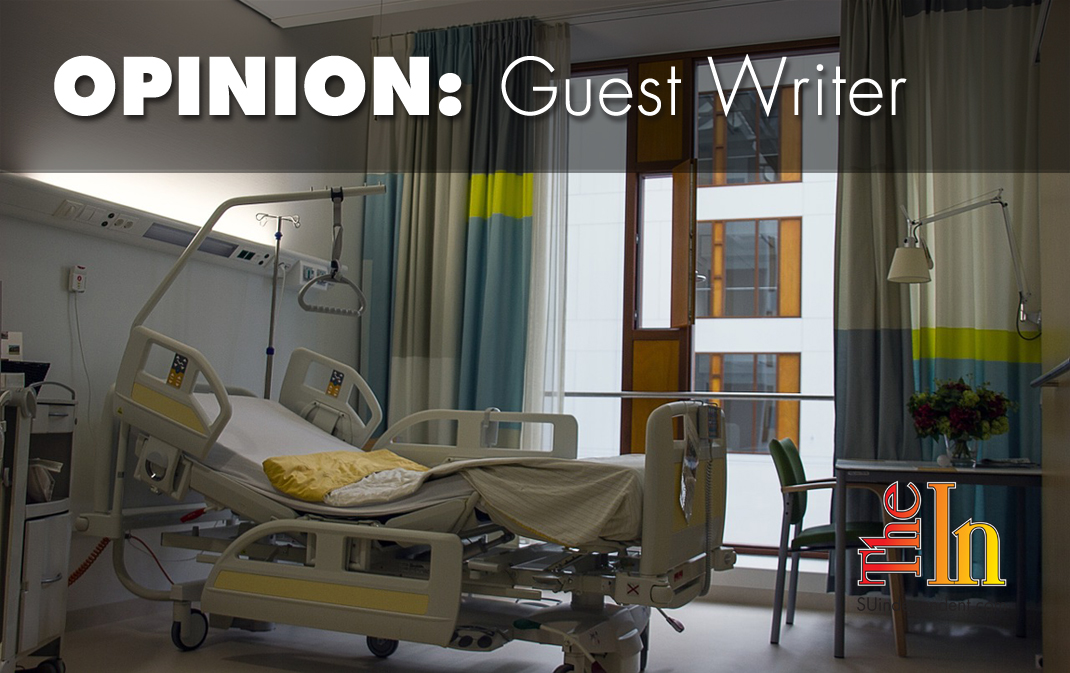
To better treat patients, hospitals should keep the family close
By Dick Resch
Loneliness is as hazardous to one’s health as smoking a pack a day, new research suggests.
Oddly enough, people in the hospital are at particular risk of becoming lonely. Doctors, nurses, and support staff may poke and prod them at all hours of the day or night. But they tend to lack interactions with family and friends, especially as the days in the hospital mount.
That could have dire consequences for their recovery. All the good work their clinicians are doing to heal them could be undermined by loneliness.
Fortunately, healthcare providers can “treat” loneliness by making smart design choices that keep loved ones by patients’ sides.
Social health has a significant impact on physical health. An analysis of multiple studies conducted by Yale University researchers found that social interaction helps patients recovering from coronary artery disease or bypass surgery. The more a patient felt supported by his social network, the more quickly he recovered.
A separate study published by the Journal of the American College of Surgeons found that patients with smaller social networks were more likely than their peers with larger networks to stay in the hospital for longer than a week.
In other words, a healthy social life in the hospital speeds healing.
There’s a lot hospitals can do to keep their patients’ social health up. For starters, they can make it easier for friends and family to stick around. Too many hospitals lack places for family members to sleep, share a meal with their loved one, charge their phones, or even hang up their coats.
Hospitals don’t have to transform themselves into the Ritz. But simple things like natural light, potted plants, artwork on the walls, and free WiFi can go a long way toward getting friends and family to extend their visit.
Reconfigurable patient rooms can make it easier for visitors to stay with their loved ones. Thirty years ago, a new dad might’ve had to nap in a folding chair while he waited to give his wife a break from their newborn baby. Today, he may be able to sleep right beside his family on a sofa that converts into a bed at the flip of a switch.
Movable walls that replace the curtains of yesteryear could allow one patient to enjoy a visit with family while her roommate sleeps in silence.
Hospitals increasingly understand that effectively serving patients requires addressing the needs of their families.
Memorial Sloan Kettering’s surgery center in New York has movable sofas that let large families all sit together. In Chicago, families at Northwestern Memorial Physicians Group can sit behind frosted-glass panels to have serious conversations in private.
Some hospitals are even going so far as to allow loved ones to help with patient care. Intermountain Healthcare in Utah found that letting family members perform some hospital staff functions reduced rates of readmission.
When hospitals design spaces with visitors in mind, patients and loved ones alike feel at home, at ease, and connected with one another. It’s time we treat loneliness like the vital sign it is by making healthcare spaces a little more welcoming.
Dick Resch is CEO of KI Furniture.
The viewpoints expressed above are those of the author and do not necessarily reflect those of The Independent.
How to submit an article, guest opinion piece, or letter to the editor to The Independent
Do you have something to say? Want your voice to be heard by thousands of readers? Send The Independent your letter to the editor or guest opinion piece. All submissions will be considered for publication by our editorial staff. If your letter or editorial is accepted, it will run on suindependent.com, and we’ll promote it through all of our social media channels. We may even decide to include it in our monthly print edition. Just follow our simple submission guidelines and make your voice heard:
—Submissions should be between 300 and 1,500 words.
—Submissions must be sent to editor@infowest.com as a .doc, .docx, .txt, or .rtf file.
—The subject line of the email containing your submission should read “Letter to the editor.”
—Attach your name to both the email and the document file (we don’t run anonymous letters).
—If you have a photo or image you’d like us to use and it’s in .jpg format, at least 1200 X 754 pixels large, and your intellectual property (you own the copyright), feel free to attach it as well, though we reserve the right to choose a different image.
—If you are on Twitter and would like a shout-out when your piece or letter is published, include that in your correspondence and we’ll give you a mention at the time of publication.



